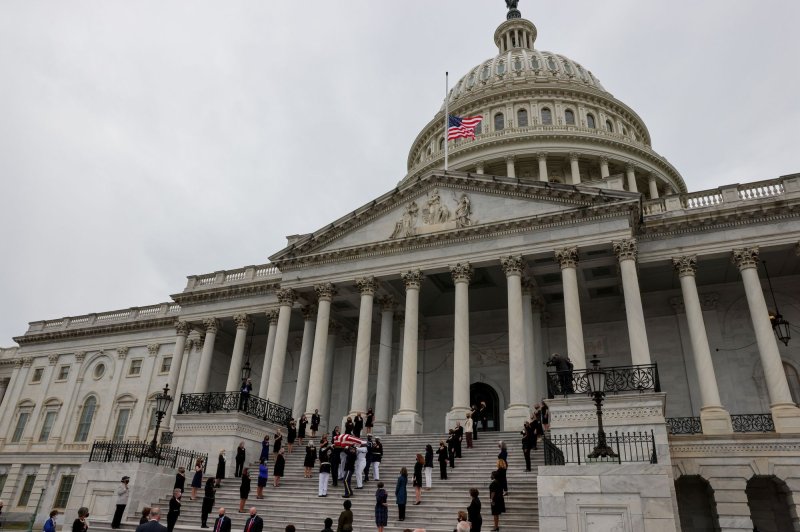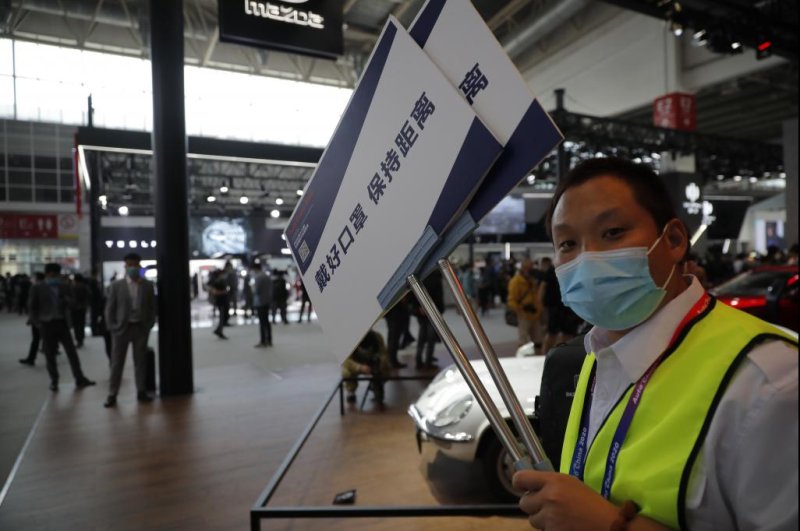
Thursday's report said the technology offers a cost-effective pathway for low-carbon hydrogen production and can remove carbon dioxide from the atmosphere. File Photo by Ryan Tong/EPA-EFE
Sept. 24 (UPI) -- A global energy watchdog said in a report Thursday that governments and polluters must quickly embrace carbon capture and storage technologies to have any chance of meeting future climate goals.
The International Energy Agency said carbon capture, utilization and storage (CCUS) technology must have a key role in trapping global-warming emissions
"Carbon capture, utilization and storage is the only group of technologies that contributes both to reducing emissions in key sectors directly and to removing [carbon dioxide] from the atmosphere to balance the emissions that are the hardest to prevent -- a crucial part of reaching the net-zero emissions goals that a growing number of governments and companies have set for themselves," IEA said in a statement.
The major report, titled "CCUS in Clean Energy Transitions," said the technology can be used with existing energy infrastructure, such as power and industrial plants, and can provide solutions for heavy industries like chemicals and aviation.
RELATED California to ban the sale of gasoline-powered cars by 2035
The report said the technology offers a cost-effective pathway for low-carbon hydrogen production in many regions and can remove CO2 from the atmosphere.
"The scale of the climate challenge means we need to act across a wide range of energy technologies," IEA Executive Director Fatih Birol said. "Carbon capture is critical for ensuring our transitions to clean energy are secure and sustainable."
Birol noted that world governments buying into the strategy is "essential" to creating a viable market for the technology.
RELATED Study highlights carbon sequestration services provided by U.S. forests
"But the industry must also embrace the opportunity," he added. "No sector will be unaffected by clean energy transitions -- and for some, including heavy industry, the value of CCUS is inescapable."
The IEA said there are existing plans to build more than 30 CCUS facilities worldwide at a cost of $27 billion, more than twice the total of investments pledged in 2017.
upi.com/7041052
"But the industry must also embrace the opportunity," he added. "No sector will be unaffected by clean energy transitions -- and for some, including heavy industry, the value of CCUS is inescapable."
The IEA said there are existing plans to build more than 30 CCUS facilities worldwide at a cost of $27 billion, more than twice the total of investments pledged in 2017.
upi.com/7041052
CCS
IS NEITHER GREEN NOR CLEAN IT CREATES METHANE FOR FRACKING OLD WELLS
AND USE IN THE BAKAN SHIELD









